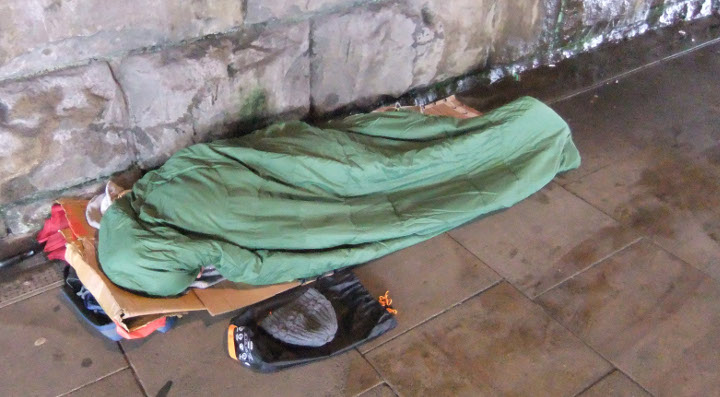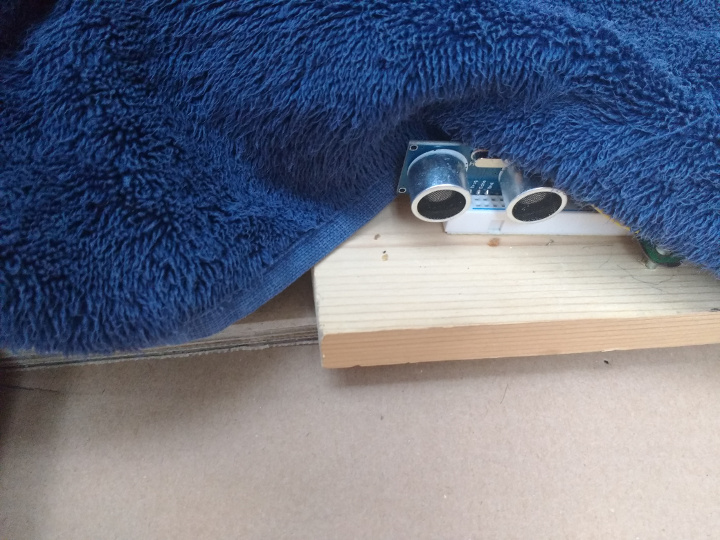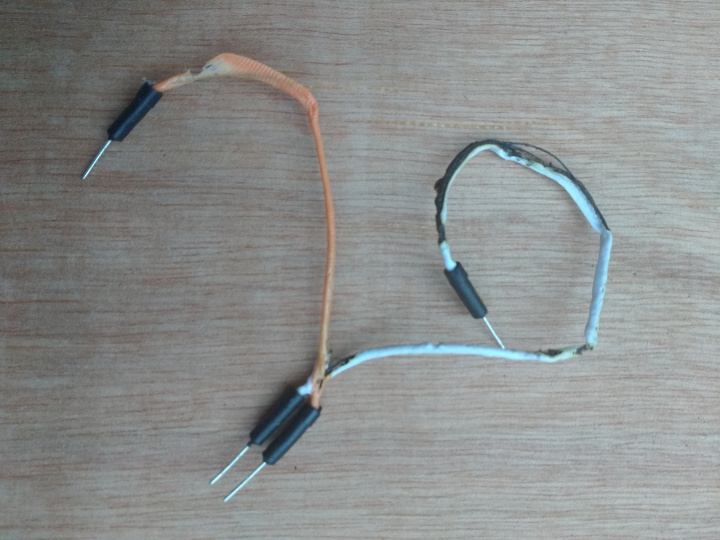Sleeper
How far can we encapsulate human consciousness? When I see a person asleep, are they in a different reality to me? What have I in common with homeless people sleeping in the streets? I have created a mechanical "street sleeper", which moves in ways that simulate a human response, forcing me to confront my own attitudes to people who are mostly ignored, and to wonder just how narrow is the gulf between us.
produced by: David Upton
Subject
Homeless street sleepers challenge us because:
- They are incongruously asleep, in a world where everyone around them is awake.
- They are attempting to be self-contained and to close off the outside world, which is fraught with danger and failure for them.
- Their presence raises so many social and human issues. They do not behave as we expect them to: often their experience and background are almost completely different. They may be influenced by drugs or alcohol.
But is it right to walk past a fellow human being lying in the street in such obvious need? If not, what can an individual do?
Technical
The system is a more or less life sized replica of a human asleep under a thin blanket. The frame and moving parts are built mostly of Meccano. It is controlled by an Arduino: it senses the proximity of other people, and also the level of ambient noise, and becomes progressively more 'worried' as these increase, reacting with sound and movement. Its right leg is articulated at the hip and knee, and its shoulders can also pivot around the axis of its spine, with a shoulder joint allowing its right arm to move. It can also play noises, ranging from involuntary sounds, such as coughing and vomiting, to happier sounds such as snoring. When it feels completely safe, it makes sounds which I associate with the subconscious, such as whale calls and bird song. A single Arduino Mega runs all the code required to control the sensors, sound circuits and actuators, categorise the sensor data, and to generate appropriate reactions. The viewer is invited to anthropomorphise the machine, interact with it, and to empathise with it.
Movement is provided by two industrial linear actuators with a six inch throw. One of my technical objectives was to build something that went beyond the normal limited power capabilities of Arduino pins. These actuators use a 12V battery and draw a lot of current, easily enough to set a normal breadboard jumper wire on fire, as I discovered whilst prototyping.
References and Acknowledgements
This work owes a lot to some people I know in SW London who have slept rough, and in particular to WM, who may still be doing so.
Sound effects downloaded from Zapsplat.com.
Code used based on code examples from sensor manufacturers and others:
DFPlayer related software, including diagnostic software, derived from software created 2016-12-07 by [Angelo qiao](Angelo.qiao@dfrobot.com) available at https://www.dfrobot.com/product-1121.html
HBridge software based on code found here: https://www.instructables.com/id/Arduino-Modules-L298N-Dual-H-Bridge-Motor-Controll/
Loudness software based on code supplied at http://wiki.seeedstudio.com/Grove-Loudness_Sensor/#play-with-arduino
Ultrasonic software based on code and wiring diagrams supplied by manufacturer (www.elegoo.com) in "37 sensor kit tutorial for uno and mega V2" pp 153-156




































































